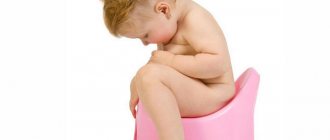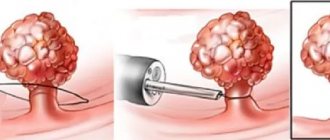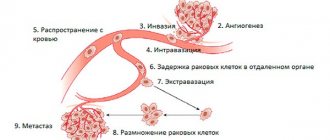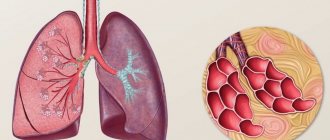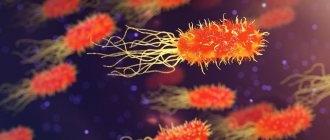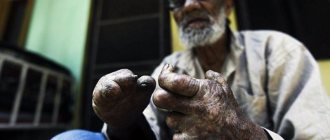Monosomy refers to genetic abnormalities characterized by changes in the karyotype. Normally, a person has 23 chromosomes, each of which has a homologous pair. If one of them loses its mate, monosomy develops. The disease is severe and often leads to intrauterine fetal death. In other cases, the child is born alive, but inherits severe congenital changes that are combined into syndromes, the most common of which are Shereshevsky-Turner syndrome and cry of the cat.
Shereshevsky-Turner syndrome
It is a consequence of monosomy on chromosome X. Affected children are often born premature or have reduced body weight. One of the classic signs of Shereshevsky-Turner syndrome, which can be noticed immediately after birth, is a pronounced skin fold on the neck. Other clinical manifestations include:
- heart defects;
- swelling of the upper and lower extremities;
- impaired lymph circulation;
- delayed speech and physical development.
As the child grows, characteristic features of the body structure appear. Height usually does not exceed 150 cm, wing-shaped folds on the neck are preserved, the ears may be deformed, the upper jaw is underdeveloped, and the chest is wide. Monosomy on chromosome X affects the development of reproductive organs. In women, there is a lack of follicles in the ovaries, menstrual irregularities, and underdevelopment of the mammary glands. In men, testosterone levels decrease and one or both testicles may be absent or underdeveloped.
The prognosis for Shereshevsky-Turner syndrome is relatively favorable. In the absence of severe developmental defects and regular monitoring by a specialist, life expectancy is not reduced.
What do adults with this pathology look like?
Patients with Lejeune syndrome have a chance, as mentioned above, of surviving into adulthood. There were even cases when such patients died at 40–50 years of age. However, their number is extremely small to speak with confidence about any symptoms characteristic of such patients.
Less than 5% of children live to be 18–25 years old. At this age, the lag in intellectual development comes to the fore. Such patients have a chance to be accepted into society. Their appearance is characterized by the same signs described at birth, sometimes they experience accelerated aging of the skin.
Cry Cat Syndrome
It is an example of partial monosomy. In this case, not the entire chromosome from one pair is lost, but only a certain section - the short arm of the 5th chromosome. The disease got its name because of the specific crying that newborn babies make. It is caused by underdevelopment of the larynx and its cartilaginous components. In addition, other symptoms of this type of monosomy are identified:
- deviation in mental and physical development;
- change in the shape of the head and facial features (underdeveloped lower jaw, specific appearance of the eyes and ears);
- lack of body weight;
- congenital malformations (microcephaly, defects of the heart, muscles, internal organs).
Like the previous type of monosomy, cry-the-cat syndrome is characterized by a favorable course, provided that there are no severe defects that can cause death.
Treatment in Italy
Russian Medical Server / Treatment in Italy / Center for the treatment of rare diseases in Milan / Cri du chat syndrome - treatment in Italy
Cri du chat syndrome (English cri du chat syndrome, French maladie du cri du chat; also cry cat disease, Lejeune syndrome - named after the French scientist who described it in 1963) is a rare genetic disorder caused by the absence of a fragment of the 5th chromosome.
In this case, a characteristic cry of the child is observed, reminiscent of a cat's meow, the cause of which is a change in the larynx (narrowing, softness of cartilage, reduction of the epiglottis, unusual folding of the mucous membrane) or underdevelopment of the larynx. The sign disappears by the end of the first year of life.
As already noted, the syndrome got its name because of the characteristic crying of children (it is similar to the meow of a kitten, the cry of a cat) suffering from this disease. This cry occurs due to problems with the larynx and nervous system. About 1/3 of children lose this special characteristic by age 2. Other symptoms that indicate Cri Cat Syndrome include:
- feeding problems due to difficulty swallowing and sucking;
- low birth weight of the child and low rates of development (primarily physical);
- significant delay in the development of cognitive, speech and movement functions;
- behavioral problems such as hyperactivity, aggression, tantrums and monotonous movements are constantly repeated;
- atypical facial features that may disappear or intensify over time;
- excessive, uncontrollable salivation;
- constipation
Additional typical signs of the disease include: hypotonia, microcephaly, delayed physical development, round face with full cheeks, hypertelorism, epicanthus, drooping palpebral fissures, strabismus, flat bridge of the nose, drooping corners of the mouth, micrognathia, low-set ears, short fingers, 4 -x digital palmar fold and heart defect (for example, ventricular septal defect (ventriculoseptal defect), atrial septal defect (atrioseptal defect), patent ductus arteriosus, tetralogy of Fallot). People with Cri de Cat Syndrome usually do not have problems with the reproductive system or reproduction (having children).
Less common symptoms include cleft lip and palate, anterior auricular fistula, thymic dysplasia, intestinal obstruction, megacolon, inguinal hernia, hip dislocation, cryptorchidism, hypospadias, rare renal malformations (eg, horseshoe kidneys, ectopic or agenesis, hydronephrosis) , clinodactyly of the fifth finger, clubfoot, flat feet, syndactyly (fusion) of the second and third fingers and toes, oligosyndactyly and increased joint flexibility. The syndrome may also include various dermatoglyphic features, including transverse flexion folds, one palmar fold, etc.
In late childhood and adolescence, physician findings include significant mental retardation, microcephaly, coarsening of facial features, brow ridges, deep-set eyes, hypoplastic nasal septum, severe malocclusion, and scoliosis. Sick girls reach puberty, develop secondary sexual characteristics, and usually have menstruation on time. The structure of the genital organs and tracts in females is usually normal, with the exception of a bicornuate uterus, which is sometimes found in this group of patients. In men, the testicles are often small, but spermatogenesis is mostly slightly impaired.
Cri-cat syndrome is associated with a partial deletion of the short arm of chromosome 5, also called “5p monosomy.” Approximately 90% of cases of this genetic disease are the result of sporadic or random mutations, meaning new cases. The remaining 10-15% arises from unequal division of parental genetic material with a violation of balanced translocation, where 5p monosomy is often accompanied by a corresponding trisomy of this part of the genome. These individuals may have more severe disease manifestations than those who present with isolated cases of monosomy 5p (due to deletion).
In most cases, the disease is accompanied by a complete loss of distal genetic information, amounting to 10-20% of the genetic material on the short arm of the fifth chromosome. Less than 10% of cases have other rare cytogenetic aberrations (eg, interstitial deletion, mosaicism, rings, and new translocations). Deletion of chromosome 5, of parental origin, occurs anew in approximately 80% of cases.
Loss of a small area in area 5p15.2 (the critical region for this disease) correlates with all clinical signs of the syndrome except for the cry of the cat, which occurs when there is an abnormality in area 5p15.3 (the critical region for cats). The results suggest that two non-contiguous critical regions contain genes involved in the etiology of this disease. Two genes in these regions, semaphorin F (SEMA5A) and delta catenin (CTNND2), are potentially involved in brain development. Deletion of the reverse telomerase transcriptase (hTERT) gene located at 5p15.33 may contribute to the phenotypic change in patients with cry-the-cat syndrome.
If there have already been cases of chromosomal diseases in the family, even at the stage of pregnancy planning, future parents are recommended to visit a geneticist and undergo genetic testing. During pregnancy, the presence of “cry the cat” syndrome in the fetus can be suspected based on the results of prenatal ultrasound screening. In this case, to definitively confirm the chromosomal abnormality, invasive prenatal diagnosis (amniocentesis, chorionic villus sampling or cordocentesis) and direct analysis of the fetal genetic material are recommended.
After birth, a preliminary diagnosis of “cry of the cat” syndrome is established by a neonatologist based on typical diagnostic signs (characteristic crying, phenotypic features, multiple stigmas of dysembryogenesis). To confirm chromosomal pathology, a cytogenetic study is performed.
Considering the presence of multiple developmental anomalies in children with “cry the cat” syndrome, it is necessary that in the first days of life newborns are examined by a pediatric cardiologist, a pediatric ophthalmologist, a pediatric urologist, a pediatric orthopedist and other specialists.
To stimulate psychomotor development, courses of drug therapy, massage, physiotherapy, and exercise therapy are conducted under the supervision of a pediatric neurologist. Children with “cry of the cat” syndrome need help from psychologists, defectologists, and speech therapists.
Congenital heart defects in “cry the cat” syndrome often require surgical correction, so children need consultation with a cardiac surgeon, echocardiography and other necessary studies. Children with pathologies of the urinary system should be under the supervision of a pediatric nephrologist and periodically undergo a set of necessary examinations (ultrasound of the kidneys, general urinalysis, biochemical testing of blood and urine, etc.).
! Despite the fact that many of the diseases described in this section are considered incurable, the Center for the Treatment of Rare Diseases in Milan is constantly looking for new methods. Thanks to gene therapy, it has been possible to achieve outstanding results and completely cure some rare syndromes.
Contact a consultant on the website or leave a request - this way you can find out what methods Italian doctors offer. Perhaps this disease has already been treated in Milan.
Causes of monosomy
Monosomy can occur at various stages of cell division. For example, with Shereshevsky-Turner syndrome, the process of X chromosome divergence is disrupted. As a result, one woman’s egg gets two X chromosomes, and the second gets none. During the fertilization process, the zygote receives a set of X0 and Y0, - instead of the normal XX or XY.
The causes of monosomy are not related to hereditary factors. Violations occur when exposed to unfavorable factors. Bad habits, radiation, some medications, chemicals, unfavorable environmental conditions, harmful working conditions, etc. can affect reproductive cells.
Risk factors
- Smoking. It can cause chromosomal abnormalities, especially during the active development of the reproductive system (in adolescence). Tar and nicotine, which is contained in cigarette smoke, triggers a number of biochemical reactions in the body, leading to the formation of germ cells with any abnormalities. In the future, if this particular defective cell forms a zygote, then the fetus will develop chromosomal pathology.
- Alcohol. The mechanism of its action is similar to the previous one. The only difference is that alcohol affects the biochemical mechanisms in the liver to a greater extent. This affects the endocrine system and blood composition. In this case, the risk of chromosomal abnormalities increases significantly.
- Mother's age. The risk of developing a chromosomal abnormality in a child gradually increases with the age of the mother. This pattern occurs in all pathologies of this group. A significant increase in the likelihood of this syndrome occurring after 40–45 years. However, no similar dependence on the age of the child’s father is observed.
- The influence of drugs. Most medications can have a pronounced toxic effect on the reproductive system. Therefore, the independent use of many drugs can lead to chromosomal disorders in the future. You should also separately consider taking certain medications during the first trimester of pregnancy (most of them are completely prohibited). They increase the risk of developing a mosaic variant of the syndrome.
- Infectious diseases during pregnancy. A number of infections and viruses (cytomegalovirus, herpes, rubella, etc.) during pregnancy can negatively affect the division of cells of the unborn child. In this regard, you should immediately consult a doctor, examine and treat such diseases.
- Unfavorable environmental conditions. In areas with unfavorable environmental conditions (areas of chemical waste disposal or mining sites), the birth rate of children with chromosomal abnormalities is slightly higher. This can be explained by the fact that such areas contain strong toxic substances, which most people do not encounter in their daily lives. Their exposure can also affect the division of germ cells.
- Radiation. It is represented by ionizing radiation (a stream of tiny particles that can penetrate the tissues of the body). As a rule, irradiation of the area of the reproductive system organs leads to damage to DNA molecules, which in the future can cause the development of chromosomal pathology in the child.
All of the above factors partly contribute to the birth of children with Lejeune syndrome. Despite this, the true causes of this pathology are still unknown. Damaged fifth chromosome occurs even in children whose parents were never exposed to the effects described above.
Diagnosis of monosomy
The disease can be detected at the stage of intrauterine development. For this purpose, all pregnant women undergo a screening ultrasound. If a specialist detects fetal developmental disorders, a chorionic villus biopsy is additionally prescribed, which allows one to obtain a tissue sample and determine the karyotype. In this way, it is possible to identify not only monosomies, but also other genetic disorders.
You can get karyotyping done at the Medical Genetics Center. It has modern precision equipment and experienced specialists. This combination allows you to obtain reliable results necessary for making a diagnosis.
Diagnosis of the disease
With cry-the-cat syndrome, diagnosis is not difficult, since the clinical picture is quite specific. If there is a family history of such diseases, then at the stage of planning a child you should consult a medical geneticist. The disease can be diagnosed already at the stage of pregnancy using the following instrumental research methods:
- invasive prenatal diagnostics;
- analysis of the genetic material of the fetus.
To confirm this disease in a child, the following diagnostic measures are carried out:
- examination of the baby by a neonatologist to identify typical signs of the disease;
- cytogenetic study.
Taking into account that such a pathology will definitely be accompanied by associated complications, additional consultation with the following specialists will be required:
- urologist;
- orthopedist;
- cardiologist;
- ophthalmologist.
The general diagnostic program may include the following research methods:
- test for the karyotype of the parents (karyotyping);
- blood test for plasma markers;
- Ultrasound;
- invasive studies;
- diagnosis in the postpartum period.
Based on the results of diagnostic measures, the severity of the pathological process, as well as the nature of associated complications, will be determined.

